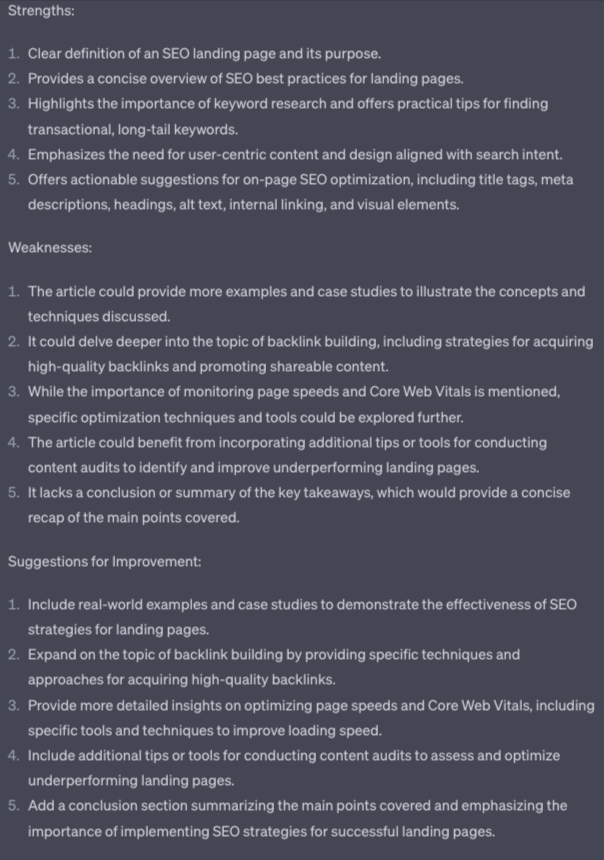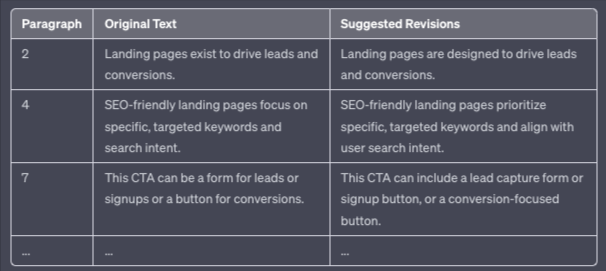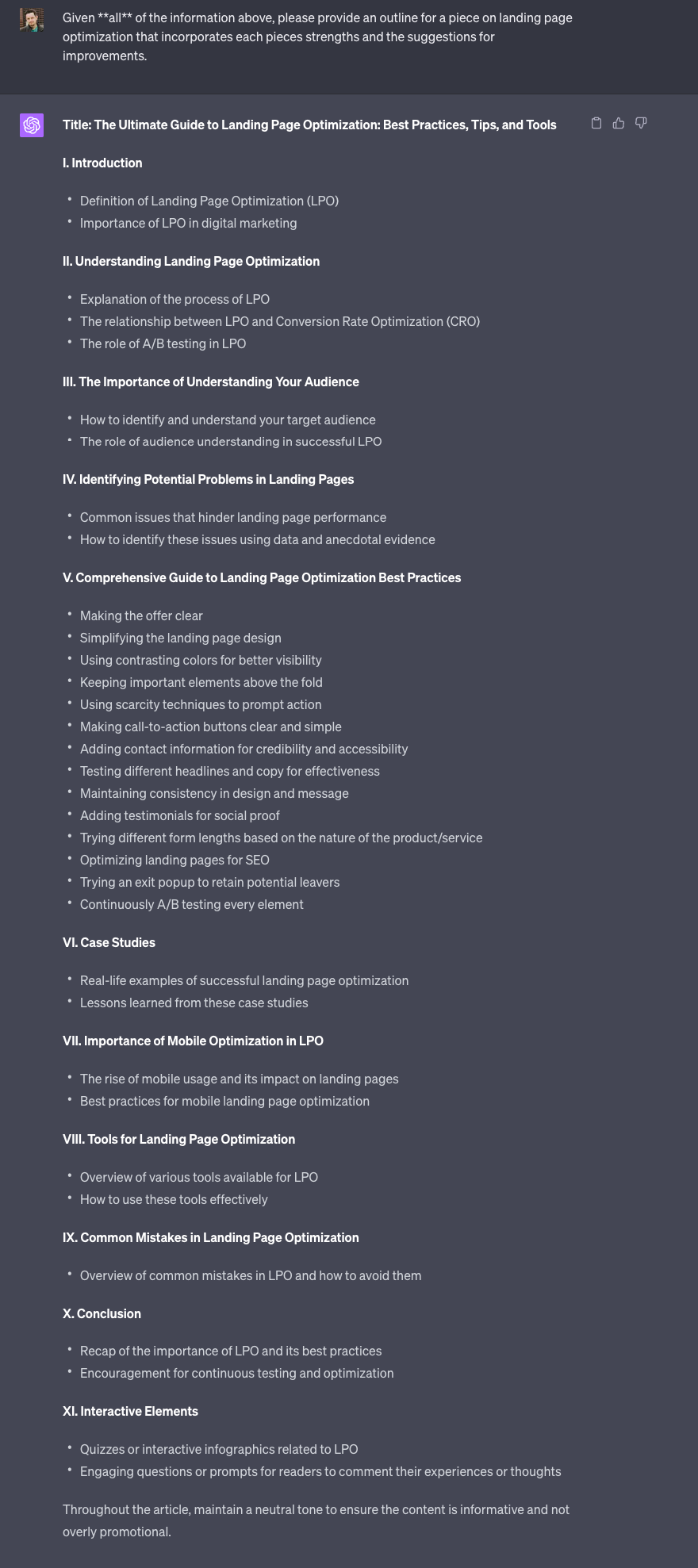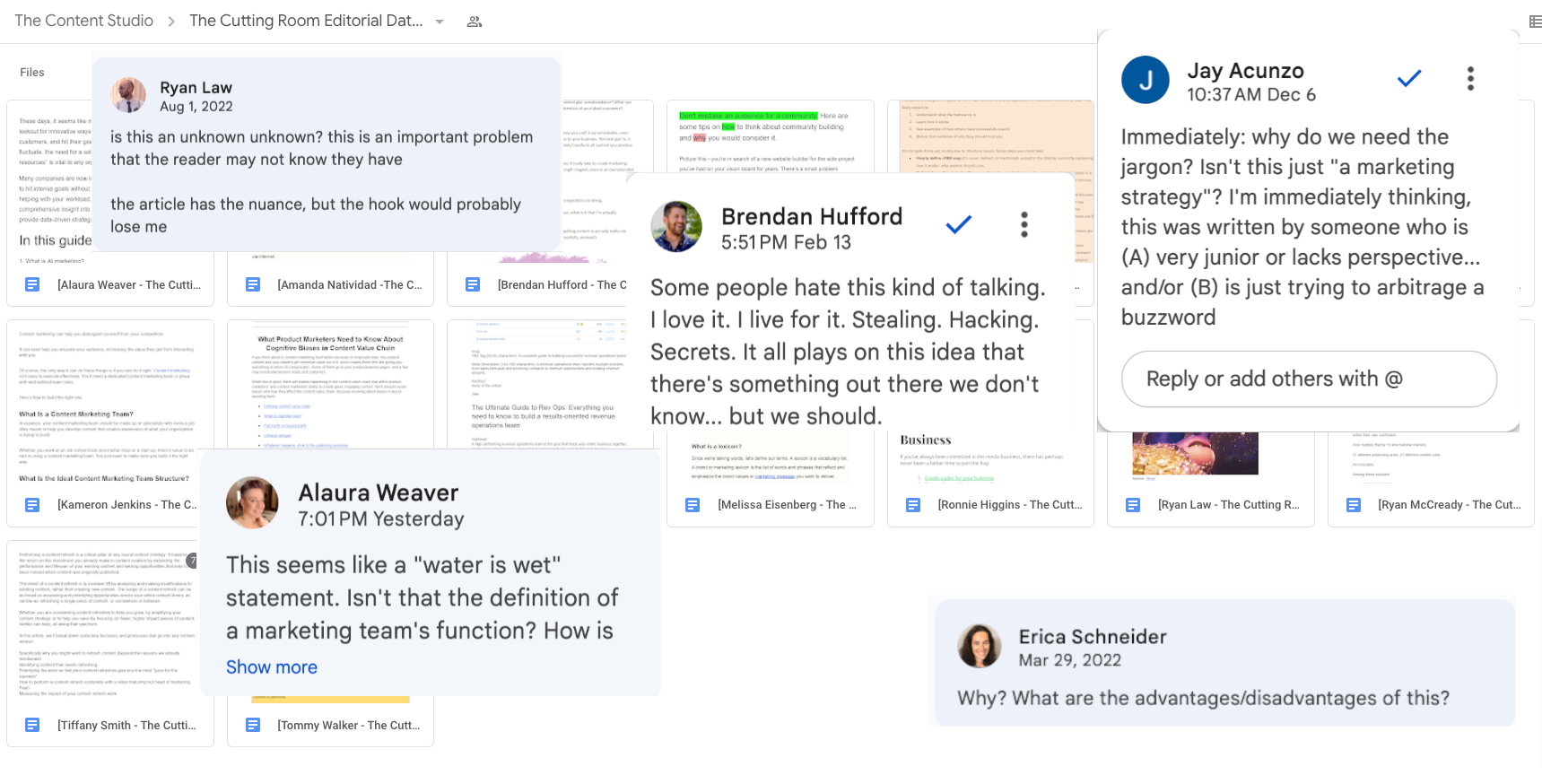How I’m using A.I. to edit

AI: Savior or tool?
The “aiBois” of Twitter and LinkedIn are touting A.I. as the next big thing, but the reality is more nuanced.
Sure, there are some stellar prompts, but what’s not discussed enough is how A.I. is a tool like any other.
Just as using a hammer to assemble Ikea furniture doesn’t make you a carpenter, single-use prompts don’t showcase the full potential of AI.
To get the most out of the tool, you have to understand the underlying principals and techniques of what you want the tool to do.
So here we go…
The four editing techniques
First, let’s talk about technique.
In my time consulting with Fortune 1,000’s, there’s one thing I’ve noticed, especially in B2B SaaS…
Many people are surprised to learn there are four distinct editing techniques. Most of us do everything, so it’s not surprising, but truth be told, we only typically excel in one or two, while the others fall by the wayside.
I, for example, am killer in the first two, and God awful at the last two. What about you?
- Developmental Editing: This is all about ensuring the content has substance and strong ideas. It’s the foundation upon which the rest of the content is built.
- Content Editing: Once we have solid ideas from the developmental editing stage, content editing is about making it interesting to read. This involves focusing on word choice, content flow, and sentence structure.
- Copy Editing: This broad style of editing is about ensuring the copy adheres to the style guide and is consistent in terms of spelling and word usage. It also involves checking research, ensuring sources are cited correctly, and that the story keeps moving forward without any cyclical usage and unnecessary phrases.
- Proofreading: This is the final polish before a piece of content goes live. It’s about checking for typos, punctuation usage, and other minor details that can make a big difference in the final product.
The great part about our new A.I overlords however is that it can be pretty ok at all four, if you ask nicely.
For example, when I get a completed draft from an author, I’ll run it through ChatGPT and use the prompt:
“Please assess the following article for it’s strengths and weaknesses, then provide a list of suggestions on how to improve.”
In the weaknesses section, it often points out ideas I may have missed on my own, which can then be reiterated to the author and addressed in the second draft.

Another prompt I frequently use is:
” Edit for word economy, creating a table notating the paragraph number, original text, and suggested revisions.”

These prompts alone do a pretty good job of covering the basics of all four types of edits. However, I encourage that as you learn more about the different editing techniques, you craft prompts that are even more specific about what you want the A.I to do.
How A.I. can assist in creating outlines
One of the most practical uses of AI in the editing process is in creating outlines.
Using the ‘Link Reader’ plugin on ChatGPT, you can Google to search a keyphrase and analyze a competitor’s site.
Prompt the AI with “please analyze the following article for its strengths and weaknesses and suggestions for improvements”

Do this three times.
Once you have the results for all three ask ChatGPT to create an outline incorporating all of those strengths while adding its suggestions for improvement, you can create a very comprehensive outline.

This approach leverages the power of AI to streamline the outlining process and ensure your content is competitive.
Evaluate your final draft with A.I.
ChatGPT can also be used to evaluate your own final copy.
By asking the AI to assess the content’s strengths and weaknesses and provide suggestions for improvement, you can gain valuable insights into how your content might be perceived by readers.
This can help you identify areas where your content excels and where it could use some improvement, providing a unique form of self-feedback that can help refine your content further.
Roleplaying with A.I.
Another powerful way to use AI in the editing process is through roleplaying.
By defining system-level roles and creating specific characters, the AI can help the author validate certain ideas and address any questions found in the final draft of an article. This level of “user feedback,” though synthetic, can help the author further address any concerns with the thoroughness of the piece. It’s like having a virtual brainstorming partner that’s available 24/7.
Don’t build pre-assembled furniture, be a carpenter
AI, specifically ChatGPT with its ‘Link Reader’ plugin, can be a powerful tool in the editing process so long as you understand the underlying principles, not just one size fits all prompts.
From assisting in creating comprehensive outlines, evaluating your own final copy, to providing a unique form of user feedback through roleplaying, AI can help ensure your content is not only competitive but also engaging and well-structured.
As we continue to explore and understand the capabilities of AI, the possibilities for content creation and editing are truly exciting. Remember, the key is understanding the underlying techniques behind what we’re prompting the AIs to do. With that understanding, we can leverage AI to its fullest potential in the editing process.
Introducing The Vault

Introducing “The Vault” – a repository of articles edited by some of the best content marketers in the industry.
See how content leaders from companies like Shopify, Postmark, Animalz, and more do their thing in-the-draft.